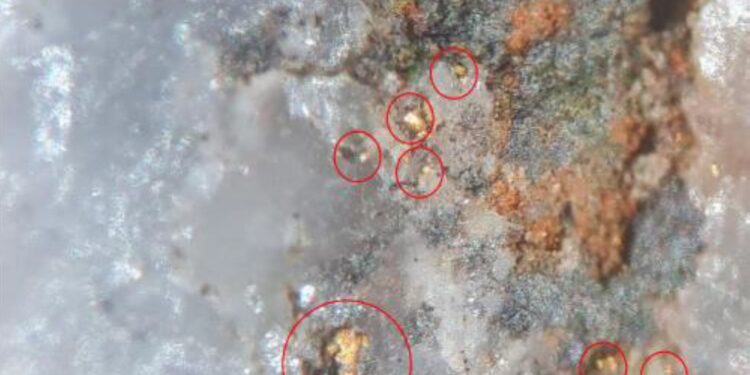Siren Gold Limited (ASX: SNG) has identified a new 3km, NW trending gold zone in exploration activities at its Lyell project in New Zealand.
Highlights
- The Alpine United, Break of Day and United Victory mines lie along this same 3km trend.
- A 50m long outcrop along this zone between the United Victory and Break of Day mines contains disseminated acicular arsenopyrite that looks very similar to the mineralisation found at Alexander River.
- Mapping indicates that the mineralisation maybe up to 10m thick.
- Rock chip samples along this outcrop ranged from 0.7 to 8.6g/t Au. A sample was also taken of small <5cm limonitic stained quartz veins in sandstone that assayed 6.2g/t Au.
- These results are very encouraging, along with visible gold found in quartz float at the Break of Day mine 1km to the south.
- The soil samples along the NW gold trend identify several anomalous areas and may represent mineralised shoots similar to Alexander River.
The Lyell Goldfield is located 40kms north of Reefton where gold bearing quartz lodes were worked over a continuous strike length of 5km. The Lyell Goldfield is the northern extension of the Reefton Goldfield that produced 2 Moz of gold at an average recovered grade of 16g/t. The project overlays the areas of the historic Alpine United mine which produced ~80koz of gold at an average recovered grade of ~17g/t between 1874 and closing in 1912. Māori prospectors were the first to recover gold from the Lyell region. Several large gold nuggets were found weighing between 17 and 52oz. Nuggets are still being discovered at Lyell, with two nuggets, weighing 1.3oz and 7oz, found in 2020.
Recent Exploration
Geological and structural mapping has been undertaken over 6km strike extent of permit. Prior to Siren, the only structural analysis was undertaken by Barry with a primary focus on the historic Alpine United mine. Barry interpreted the Alpine United mine to be hosted in a tight upright anticline.
Mapping by Siren had a particular focus on determining the wider structure of Greenland Group sediments within the permit. The Greenland Group bedding is shown to be folded into a series of north trending folds with east dipping axial planes in the south and west dipping axial planes in the north of the permit. This is very similar to Alexander River, with east dipping axial planes and the Bull and McVicar east dipping mineralised shoots in the south, and west dipping axial planes and Loftus-McKay, McVicar and Bull West dipping shoots in the north.
The main structure of significance identified during mapping is the Alpine Anticline. This fold extends along the length of the permit. Quartz veining in the Lyell Creek, Irishmans Creek, and in adits 300m south of Eight Mile Creek are bedding parallel, suggesting a saddle reef system developed in the hinge zone. Quartz veins are mostly milky with occasional smoky grey patches and contain rare fine pyrite and arsenopyrite. Vein thickness is commonly 0.1- 0.4m although 1-4m wide quartz veins have been observed.
Soil sampling to date has confirmed a continuous zone of strong arsenic soil anomaly extending over 5kms along the Alpine Anticline, while gold anomalism along the Alpine anticline is patchy. This is consistent with the field mapping. However, recent soil sampling shows a NW trending gold anomaly that intersects the anticline around the Alpine United mine. The anomaly extends for over 3kms where it potentially intersects a syncline around the United Victory mine. The Break of Day mine is also located along this anomaly. The NW gold trend also lines up with the 1882 gold claims. An outcrop of acicular arsenopyrite mineralisation was found at Mt Lyell along this gold anomaly, between the United Victory and Break of Day mines.
The outcropping mineralised zone extends for around 50m along strike and may be up to 10m thick. This mineralisation looks very similar to the disseminated acicular arsenopyrite mineralisation found at Alexander River. Rock chip results ranged from 0.7 to 8.6g/t Au.
For further information please visit: https://www.sirengold.com.au












